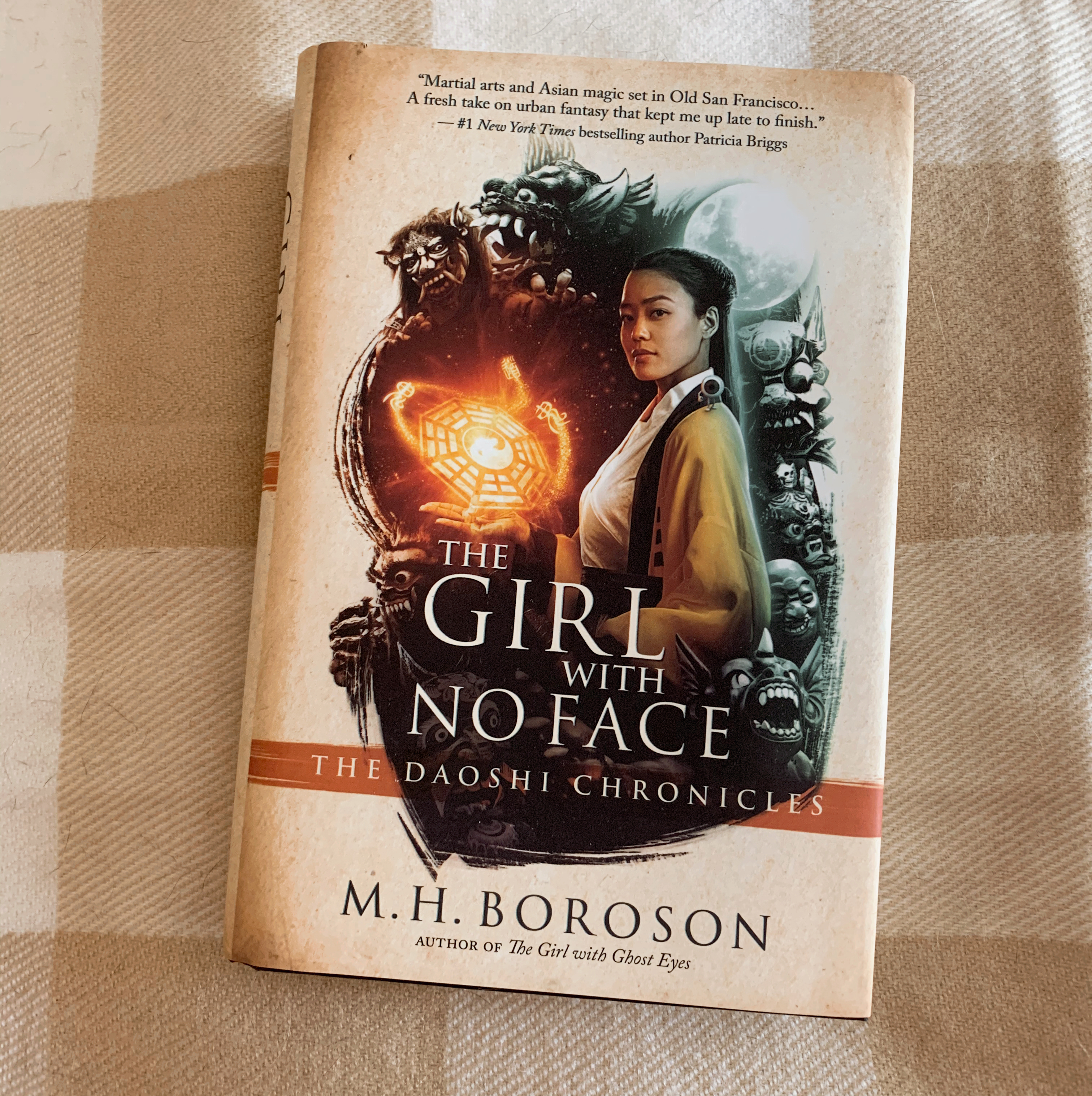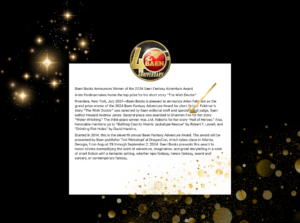The Girl With No Face by M.H. Borosan
It’s the end of the Nineteenth Century. San Francisco’s cobblestone streets are haunted, but Chinatown has an unlikely protector in a young Daoist priestess named Li-lin. Using only her martial arts training, spiritual magic, a sword made from peachwood, and the walking, talking spirit of a human eye, Li-lin stands alone to defend her immigrant community from supernatural threats.
But when the body of a young girl is brought to the deadhouse Li-lin oversees for a local group of gangsters, she faces her most bewildering—and potentially dangerous—assignment yet. The nine-year-old has died from suffocation . . . specifically by flowers growing out of her nose and mouth. Li-lin suspects Gong Tau, a dirty and primitive form of dark magic. But who is behind the spell, and why, will take her on a perilous journey deep into a dangerous world of ghosts and spirits.
Not too long ago I raved about how much I enjoyed The Girl With Ghost Eyes. Well, The Girl With No Face managed to be even BETTER.
The second in the Daoshi Chronicles series, The Girl With No Face took everything that I loved about the first book and paired it with even stronger character development for Li-Lin and other returning characters. In particular (and this is a slight spoiler) the relationship between Li-lin and her father is a standout in this book.
What this series does really well I think (but it often isn’t mentioned in reader reviews and I didn’t mention this myself when I reviewed the first book) is it presents a strong female character that also feels contextualized to her time and culture. So yes Li-lin is a kickass heroine, but she doesn’t feel wildly anachronistic. She feels like she belongs in 1899 San Francisco and that makes her struggles and character development feel believable. There are also some nice gendered cultural touchstones in this book that are very, very well done (in particular, a conversation about foot binding and a conversation about why Li-lin’s father wanted a boy, not a girl).
The other thing it does well is present Chinese culture in a way that doesn’t feel Westernized or watered down. I would say I have an above-average knowledge of China, her history, and her culture (compared to the average American which is, I know, a super low bar), but a lot of the stories, figures, and cultural practices are things I’ve never heard of or even have the glimmer of a memory that maybe I learned about it in the past. Obviously I can’t comment on the accuracy of everything that’s used, but wow am I learning a lot by reading this series.
If you liked, but didn’t love the first book in the series, I would recommend continuing on to this one because it raised the bar on the series and I’m very, very excited for the next to come out (whenever that is).
The only thing I actually don’t like about The Daoshi Chronicles series is that I’m discovering this when it’s only two books deep. I could use about ten more of these right now haha.
I also want to note this series would be a great quarantine choice. They’re fun, fast-paced, magical, transportive, non-depressing, and they’ll teach you something if you’re open to learning, but you’re not at all required to do deep, meditative thinking.




